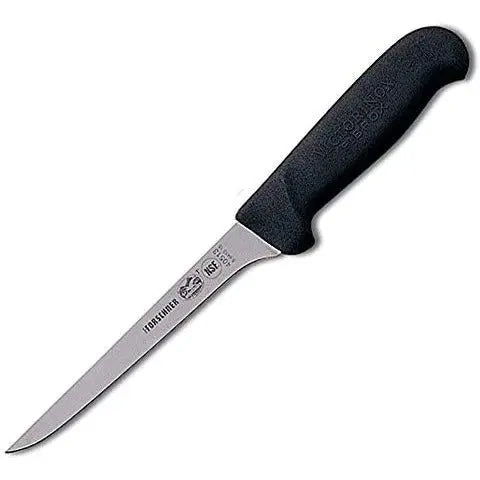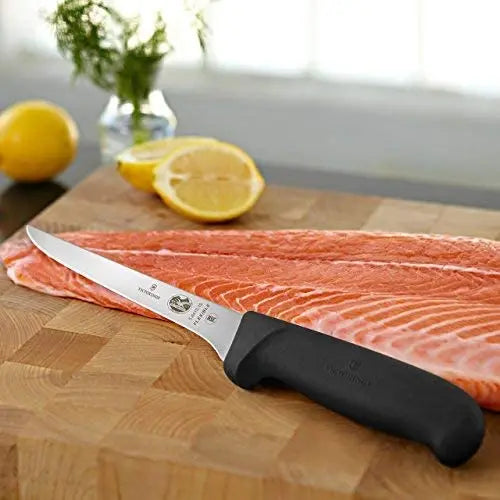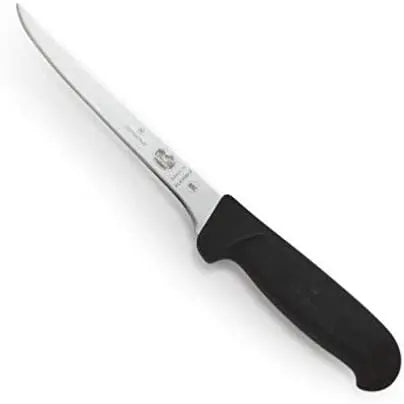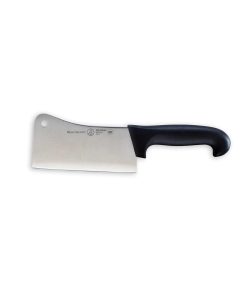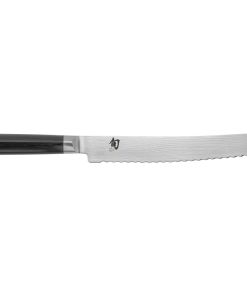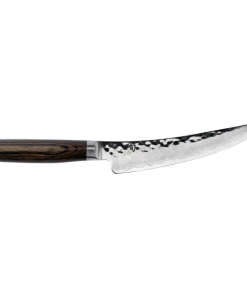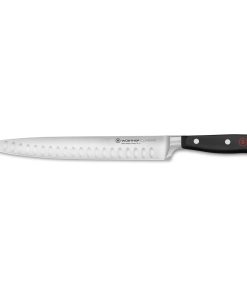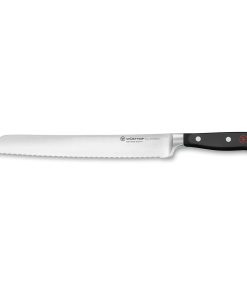Victorinox 6″ Narrow Flexible Boning Knife VICTORINOX
$ 46,99 $ 28,19
- With a thin blade and enhanced flexibility, this knife offers superior control using its “S” shaped edge that’s perfect for separating meat, poultry, or fish from the bone
- Contemporary handle inspired by our Fibrox Pro line is textured, ergonomic, and slip-resistant and is paired with lightweight European steel for a perfectly balanced design
- The high-carbon stainless steel blade is conically ground to form an exacting angle to maximize sharpness
- Expertly crafted in Switzerland since 1884; designed for professionals who use knives all day, every day; lifetime warranty against defects in material and workmanship
Separating meat, poultry, or fish from the bone is no longer a difficult task with the 6″ Swiss Classic Boning Knife. With a flexible blade and razor-sharp edge, this “S” shaped knife’s key characteristics include precision, dexterity, and maneuverability. Optimally weighted with high-quality, lightweight European steel that reduces hand and wrist fatigue, the Swiss Classic Boning Knife is comfortable even after extended use. In addition to deboning, this knife can also be used for removing skin from meat or slicing through joints and cartilage.
Boning knives are easy to distinguish based on their unique blade shape. The straight-edge of this knife allows for smooth, clean cuts and the pointed tip allows you to easily pierce meat. The tapered knife edge is ground in two directions to hold its edge longer, and can easily be brought back to original sharpness. The blade is also more flexible than other knives to allow for enhanced maneuverability around bones. Flexible boning knives are best suited for thinner, more intricate cuts of meat that can be easily pierced, such as fish, while stiff boning knives are best suited for tougher meats that require more heft.
We’ve selected the best attributes derived from our rich commercial heritage and modified them to suit the home chef. The Victorinox Swiss Army Swiss Classic collection offers a contemporary handle, inspired by our patented Fibrox Pro line. Designed to minimize wrist tension while providing a secure grip, the contoured nylon handle is both lightweight and durable, making these knives seem less likes tools and more like an extension of your hand.
Whether a seasoned, or novice home chef, Victorinox Swiss Army offers not only the right tools and the know-how, but most importantly, the confidence to achieve one’s culinary aspirations. Expertly crafted in Switzerland since 1884, Victorinox offers a lifetime guarantee against defects in material and workmanship.
Formerly Forschner
In 1937 Victorinox began selling cutlery in America through a Connecticut distributor called R.H. Forschner & Co. A well-known manufacturer of butcher scales, Forschner soon became the exclusive U.S. distributor for Victorinox knives, and was the name by which Victorinox knives were known.
In 2011 Victorinox began marketing all its product lines, including kitchen knives, under the common umbrella name by which the company is now popularly known – Victorinox Swiss Army. Today, Victorinox Swiss Army still sells a handful of accessories, including the High Heat Turner line, under the Forschner name.
Care and Use
Be good to your knives and they’ll be good to you. Following these simple guidelines will ensure that you get the longest life out of your knife!
Hand Washing
Victorinox Swiss Army recommends washing all knives by hand. For best results, hand wash your knives with a soapy cloth and dry immediately.
Dishwasher
While Swiss Classic knives are dishwasher safe, we recommend hand washing as dishwashers are designed to spray water at a relatively high pressure, which can jostle the silverware and cause the knives to collide, dulling the edge.
Maintaining your Knife’s Edge
For optimum performance, knives should be honed after every couple of uses. Proper and frequent use of a honing steel will keep your knives sharper and performing at their best, but remember that a honing steel will not sharpen a dull knife. Honing steels are maintenance tools and are used to help keep an already sharp blade from degrading. During use, a knife edge becomes rolled or turned from direct contact with cutting boards, bones or other hard objects. In this case, honing is necessary to straighten the edge of the knife. After significant use, the steel particles become damaged and the edge cannot be brought back by honing, so sharpening is necessary. If your knives are dull, pitted, or you see visible nicks on the cutting edge, you’ll need to sharpen with a Swiss Sharp Handheld Sharpener (49002) or bring to a professional for re-sharpening.
History and Heritage
In 1884, Master Cutler Karl Elsener opened a cutlery shop in Ibach, Switzerland. There, he and the cutlers’ union he formed produced the finest steel cutlery, finished with the now-famous proprietary edge preferred globally by professional and home cooks. In 1891, Karl supplied the Swiss Army with its standard issue Soldier’s Knife and in 1897 with the Officer’s Knife. In 1921, after the death of his mother, Victoria, and with the advent of stainless steel, then known as “inoxydable” and used in the production of his cutlery, Karl changed the name of the company to Victorinox. It is from those humble beginnings that a worldwide icon was born.
Today, Victorinox is still owned and operated by the Elsener family, and both the company and family still resides in the small village of Ibach, Switzerland.
Fast Shipping & Professional Packing
Thanks to our longstanding association with UPS FedEx DHL as well as other top global carriers, we are able offer a variety shipping options. Our warehouse personnel is highly-skilled and will wrap your goods in accordance with our exact and accurate specifications. Before shipping, your goods will be thoroughly inspected and secured. We deliver to thousands of customers each day from multiple countries. This shows our commitment to becoming the largest online retailer on the planet. The warehouses and centers of distribution are situated in Europe and the USA.
Note: Orders that contain more than one item will be assigned a separate processing period for each item.
Prior to shipping, we will examine thoroughly the items you have ordered. The majority of orders will be shipped within 48 hours. Expected delivery times are between 3 and 7 days.
Returns
We are not able to manage the stock at our factory and warehouse. The actual inventory may change at any moment. It is possible that inventory could run out once your order has been processed.
Our policy runs for a period of 30 days. We will not exchange or refund your order if it has been 30 days since you purchased it.
You are able to return an item in the event that it is not used and still in the same state as the day you received it. The item must be in its original packaging.
Related products
Chef's Knife
Chef's Knife
Chef's Knife
Bread Knife
Carving Knife
Boning Knife
Boning Knife
Chef's Knife
Chef's Knife
Bread Knife
Carving Knife
Boning Knife
Chef's Knife
Boning Knife
Bread Knife
Chef's Knife
Carving Knife
Boning Knife
Carving Knife
Chef's Knife
Bread Knife
Boning Knife
Chef's Knife
Chef's Knife
Bread Knife
Chef's Knife
